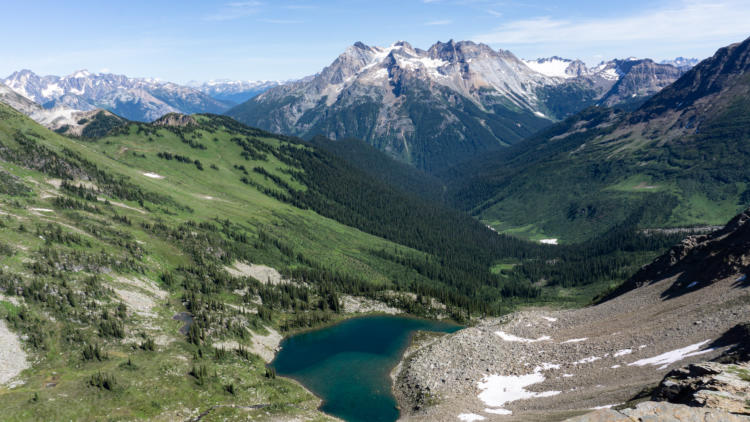Update: Two dedicated wildlife champions have stepped up to match your donation for the wild, up to $14,000! That means your gift of $50 becomes $100 for wildlife, wild places, and clean water.
“A root!” The words reach me down the trail as my 2-year-old son excitedly jumps over another tree root in our afternoon forest walk. His excitement is contagious and all of a sudden everywhere I look, I see tree roots.
For my son, the roots are a mystery. We follow the roots until they disappear beneath the soil and I try to explain the extraordinary ways all the different parts of the forest support each other. How trees and plants use a network of roots and mycelium to communicate, sending nutrients and water to those in need.
I want my son to learn that nature is resilient, that the forest is more than just trees — it is a connected system that needs all of its pieces to make a whole. I want him to know that we are a part of this system, and that our actions have big impacts. We can only cut away so much before things fall apart.

Imagine you are a caribou migrating through an old growth forest, the trail packed by the hooves of your ancestors over hundreds of years. This landscape is a part of you — the rich black soil beneath your feet, the earthy scent of lichen covered branches, the shelter of cedar canopies stretching into the skies above — even the nurse logs feeding the fungal network below, allowing the forest to communicate and grow together. It’s a long journey across the Columbia mountains, but the forest has always supported you.
But now, these forested safe havens are far and few between. Clearcuts checkerboard the landscape, your home carved into tidy squares. The thriving forest you depend on slashed down to the soil. Your migration path blocked by dense pine plantations and noisy machines. Your forest community has been torn apart, one piece at a time.
The old growth ecosystems that caribou and other animals depend on, like the Inland Temperate Rainforest, are at risk of collapse within the next ten years if nothing is done to protect them. Will you make a gift to defend our wild places?

It’s not just our forest networks that are in danger. Larger networks connect animals like bears and wolverines to the wilderness they depend on, over thousands of kilometres. Networks of clean water stretch from alpine glaciers all the way to the sea. All of these interconnected networks are at risk as they lose essential connections, one by one.
Like mycelium connecting trees underneath the forest floor, our human network is stronger when we work together to defend wildlife, wild places, and clean water. Your generosity will fuel real change, a future where wild places remain intact.
The wild supports us — nourishing that untamed part of ourselves. It’s where we turn for inspiration, awe, and a breath of fresh air. When I walk in the forest with my son, I am reminded that we are all profoundly connected — to each other and to the wild.
For so long, we have taken from nature. Your gift will give back directly to the wild today. When you stand up for nature, you are fighting for a better future. One with clean water and intact ecosystems, old growth forests, and a safer climate for us and for plants and animals, too.
In tough times we must be like trees connected by mycelium networks, working together to send strength to those who need it most.
Times couldn’t be tougher for wild places and wildlife — they need our support.
Executive Director
ps. Thank you for being part of our amazing community. It has been a hard few years, but we are stronger together.
pps. Wild networks need our support, all year round. Can you join our generous network of monthly donors with a gift to make sure our wild places stay connected?








